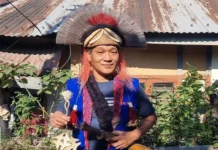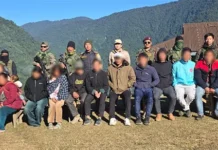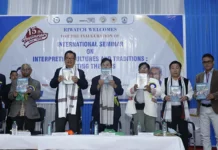Dr Leeyir Ete
In recent times, Arunachal Pradesh has witnessed a wave of student suffering, harassment and suicides, exposing a silent yet severe mental health crisis among the youths. The reasons are manifold – family conflicts, bullying, harassment, academic pressure, relationship problems, and body image issues. Yet the common thread binding them all is the heartbreak left behind for families struggling to make sense of these tragedies.
And so, the haunting question remains: Why are our youths losing hope so early?
Many adults may describe today’s adolescents as being ‘too sensitive’ or ‘fragile’, incapable of handling pressure or criticism. Yet the heartbreaking events of today have revealed a deeper truth – behind this façade of sensitivity lies a generation struggling silently to cope with overwhelming self-doubt, loneliness and emotional disconnection.
In an age where educational success and employment carries immense social weight and validation, academic achievement is often endorsed as a measure for personal worth. In this context, love, though unconditional in intent, becomes dependent on the conditions of performance and academic excellence, wherein the child internalizes the belief, ‘If I fail, I am a failure.’ Thereafter, every disappointment or setback may be interpreted as a personal failure, making it feel overwhelming. The problem, therefore, is not that the youths feel too much, but that the system around them is yet to develop mechanisms that encourage the management of these feelings with empathy.
This is not to suggest that the adults around them are not concerned. Parents work long hours away from home to provide financial security and the best opportunities for their children. Teachers, despite their best efforts, are overburdened with academic and administrative workload. However, this unavoidable lack of time and presence can unintentionally create an emotional gap, leaving the subtle signs of distress go unnoticed.
Despite the growing awareness and discussions on mental health in the state, there still persists a systemic failure to recognise it as a critical issue, with insufficient interventions at the grassroots. Many educational institutes lack structured mental health support within their campuses, with only a few employing student counsellors and training teachers in student mental health. This gap, coupled with a broader scarcity of trained mental health professionals within the state, poses a significant challenge to timely treatment and recovery.
What can be done?
In addition to adopting strategies like mandatory recruitment of counsellors in every educational institute, increasing the numbers of trained mental health professionals, psycho-education of families, teachers and strengthening of overall mental health infrastructure within the state, what we truly need as a society is the recognition of mental health issues in our state as a critical concern. Equally required is a societal shift – the cultivation of skills like empathy and non-judgement that teaches us to engage with the issues of the younger generation, even when they seem weak or alien to adult perspectives. What may seem as an act of rebellion, defiance and laziness may in fact be a desperate attempt to be noticed and/or and an indirect call for help.
Modernisation and digitisation have paradoxically increased isolation in our tribal communities, which have historically thrived on interpersonal connection. And ironically, it is at the peak of technological development in communication that our youths face the biggest emotional communication gap. We must rebuild this connection with compassion and meaningful dialogue, and recognise that ‘presence’ and not just provision is the anchor to a child’s sense of safety and self-worth.
Every instance of student distress is a reflection of the underlying societal challenges and systemic shortcomings. These events compel us to introspect and act collectively towards building mental health support structures within our communities, before more young lives are weighed down in silence. (The contributor is a psychologist and a scientist at the Indian Council of Medical Research, Arunachal Institute of Tribal Studies, RGU)




